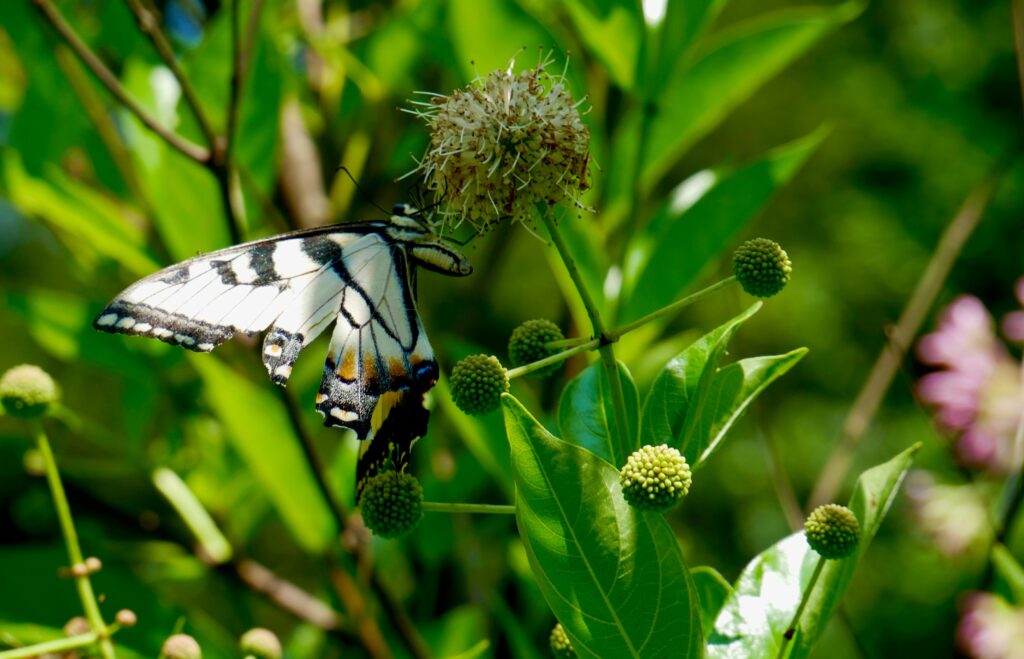By David P. Davis
Newsroom@DominionPost.com
This week in What’s Blooming at the West Virginia Botanic Garden (1061 Tyrone Road) we focus on our original pollinator bed, the Butterfly Garden. The Butterfly Garden is below the lower parking area and can be identified by the metal butterfly sculpture that now resides there.
One interesting feature of the Butterfly Garden is the walkway between the two main beds (designed to reflect the front wing and hind wing of a butterfly) and the wildflowers that tower around and above you as you traverse it.
Blooming now in the Butterfly Garden is a collection of native perennials. The most prominent bloom right now is purple Joe Pye weed, Eutrochium purpureum. Online descriptions note that this clump-forming perennial typically grows to about 7 feet tall, but our plants are monsters, growing to about 12 feet tall. The Butterfly Garden has a heavy clay soil that is typically wet, which must be what Joe Pye loves. This species has large, composite blooms that form a convex-shaped array of purple-pink florets that butterflies love.

Another native perennial blooming along this walkway is the cardinal flower, Lobelia cardinalis. This lovely scarlet bloom has a central, upright, nectar-filled tube that is flanked by two lips, the lower one with three lobes, and the upper with only two. It requires wet soils, ones that seldom dry out, and the Butterfly Garden meets that criteria.
Another current bloom in the Butterfly Garden is summer phlox, Phlox paniculata. This herbaceous perennial is a favorite for many gardeners as it comes back strongly year after year and has long-lasting magenta, pink or even white blooms. Deer like it too, but when they nibble it in the spring, it often recovers well with the result of stockier plants that have more blooms. This happens because the apical dominance of the leading bud is removed from the plant and lateral buds lower down the stems respond by growing out rapidly. In fact, many late-season perennials can be pruned in this manner earlier in the growing season to foster bushier plants with more blooms.

The last Butterfly Garden bloom that we will cover this week is the buttonbush, Cephalanthus occidentalis. This shrub or small tree has densely packed, spherical blooms that are filled with nectar.
What all these species have in common is that they can attract bees and butterflies in large numbers. Right now you can find swallowtails, monarchs, honey bees and bumblebees, along with a myriad of other insects and hummingbirds among the blooms.
So, take some time to walk around the lovely beds of the Butterfly Garden and immerse yourself in our native flora and fauna.
David P. Davis, Ph.D., is a gardener at the WVBG. For visiting information, maps, and more, visit WVBG.org.





